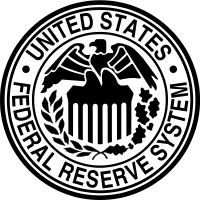Debit Caps: Fed Explains Transaction-Monitoring Rationale (Aug. 13, 2015)
 The last lingering issue in the long-running legal dispute between merchants and the Federal Reserve Board of Governors over debit interchange fee caps took a step toward resolution this week, with the Fed detailing how it calculated a controversial aspect of the fee limit. Responding to a June 10 request from U.S. District Court Judge Richard Leon, the Fed explained its rationale for including certain transaction-monitoring costs incurred by card issuers when calculating interchange fee caps called for by the Durbin Amendment.
The last lingering issue in the long-running legal dispute between merchants and the Federal Reserve Board of Governors over debit interchange fee caps took a step toward resolution this week, with the Fed detailing how it calculated a controversial aspect of the fee limit. Responding to a June 10 request from U.S. District Court Judge Richard Leon, the Fed explained its rationale for including certain transaction-monitoring costs incurred by card issuers when calculating interchange fee caps called for by the Durbin Amendment.
The clarification is the latest step on a long path through the legal system for the case of NACS vs. Board of Governors of the Federal Reserve System. In 2011, soon after the Fed set the interchange fee cap at 21 cents and five basis points per transaction, plus a 1 cent adjustment for fraud prevention, a consortium of merchant groups, including the National Association of Convenience Stores (NACS), filed a lawsuit against the agency, claiming the limit should be closer to the originally proposed 12 cents per transaction. The plaintiffs won the first round in the District Court for Washington, D.C., where Judge Leon ruled in the merchants’ favor in June 2013. However, an appellate court reversed the lower court’s decision in March 2014, with a three-judge panel ruling that the caps were appropriate. The appeals court also threw out a network-routing requirement that would have required issuers to provide merchants with up to four different routing options—two each for signature and PIN transactions. Following the Fed’s successful appeal, NACS petitioned the U.S. Supreme Court to review the case but was unsuccessful, with the high court declining to hear the case in January 2015, kicking it back down to the lower court to sort out the final issue; clarification from the Fed on the transaction-monitoring cost.
At issue was why the Fed deems transaction-monitoring costs appropriate to factor in when determining interchange fee caps. Under the law, costs incurred by issuers for particular transactions are allowed to be included in the calculation—but broader fraud-prevention processes are not. Transaction-monitoring processes, which include neural networks and fraud-risk scoring systems, are just as integral to a transaction as confirming a card is valid and authenticating the cardholder, the Fed said. As such, those costs can be factored into the calculation of the interchange cap, the agency argued.
“Because the statute requires the Board to consider incremental authorization costs in setting the interchange fee standard, the Board concluded that it should consider the costs of all activities that are integral to authorization, even if those costs are also incurred for the dual purpose of helping to prevent fraud,” the Fed’s clarification said.
Within 30 days of the Fed Board’s action, the judge ordered the parties to the case to submit a joint status report on how the case should proceed, according to a June NACS report.
Related stories:











































